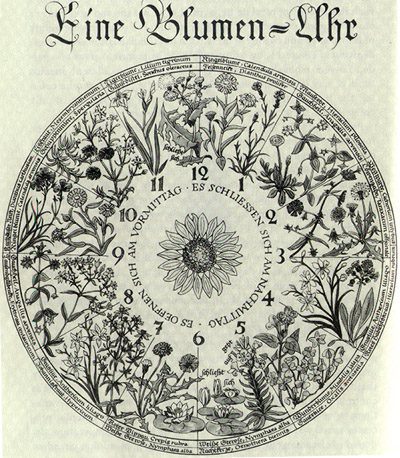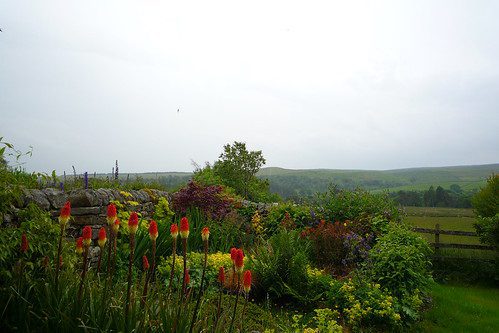NY Time’ guest columnist Leon Kreitzman writing for Olivia Judson’s The Wild Side, wrote in April about bees’ ability to tell the time of day and harvest pollen accordingly
In “Philosophia Botanica” (1751), the great taxonomist Carl Linnaeus proposed that it should be possible to plant a floral clock. He noted that two species of daisy, the hawk’s-beard and the hawkbit, opened and closed at their respective times within about a half-hour each day. He suggested planting these daisies along with St. John’s Wort, marigolds, water-lilies and other species in a circle. The rhythmic opening and closing of the plants would be the effective hands of this clock.
Here‘s a suggested collection of plants to use, which would open in sequence over time.

I’m staying at the sculptor Julia Barton‘s beautiful house in a hamlet called Donkleywood in Northumberland National Park, surrounded by sheep fields. It’s raining out, and her garden is sparkling. Swallows are absailing in and out of the eaves.
